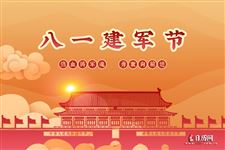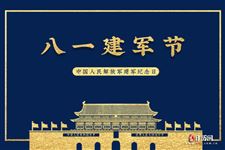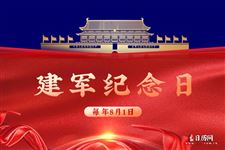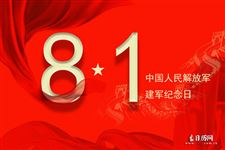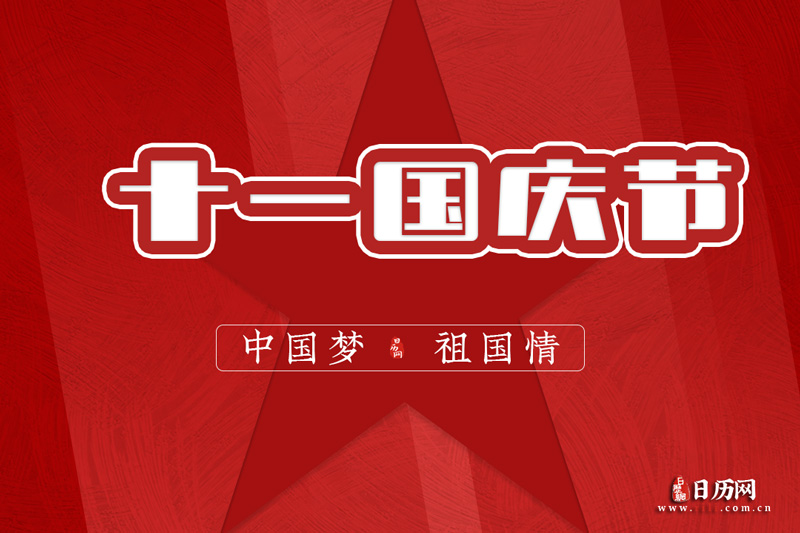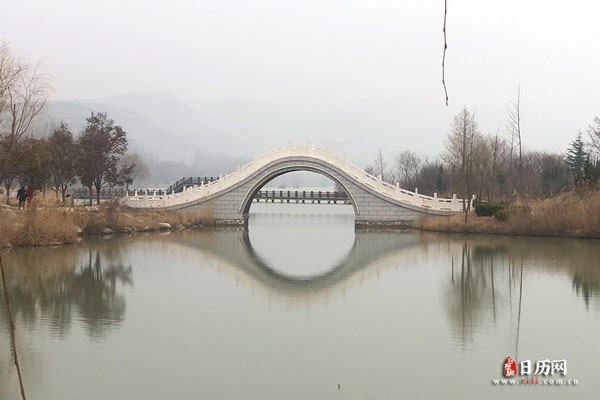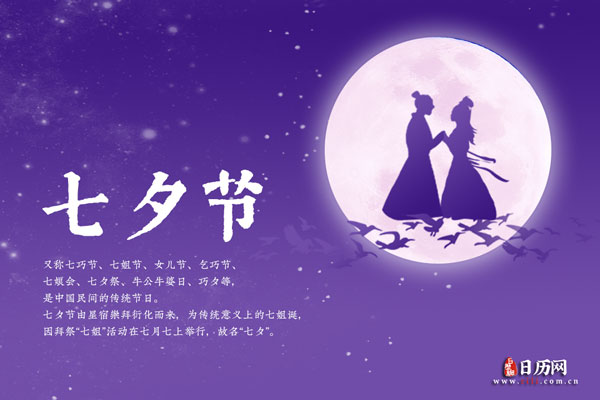建军节用英语怎么说:Army Day
建军节用英语怎么说:Army Day
每年的八月一日是中国人民解放军建军纪念日,因此也叫“八一”建军节。建军节用英语可以称为:Army Day。中国每年的八一建军节全称为:China's Army Day。
1928年4月,朱德、陈毅率领保存下来的南昌起义军与毛泽东领导的秋收起义部队在井冈山会师,正式组成了中国工农革命军第四军。1933年6月30日,中央革命军事委员会决定:每年8月1日为中国工农红军纪念日。同年7月11日,中华苏维埃共和国临时中央政府批准了这个决定。从此,“八一”成了中国人民解放军的建军节。
每年中国建军节,部队都组织盛大的纪念活动,庆祝自己的节日。各级政府,也组织隆重的军民联欢晚会或座诫会,邀请老红军、军队离退休干部复员退伍军人、革命伤残军人及烈军属代表参加。同时,还要组织拥军优属活动,宣传人民军队的光荣传统,检查优抚工作的落实情况,发现问题和困难及时给予解决。
各级政府、广大人民群众历来把开展拥军优属活动作为纪念建军节的“保留节日”。中学团组织可以在建军节前后积极组织各种形式的拥军优属活动,通过“军营一日”体验人民军队严明的纪律,严格的要求,严谨的作风,全心全意为人民服务的精神;通过带领中学生为军烈属上门服务,感受军人和军人家庭为祖国和人民安宁作出的牺牲和奉献,培养中学生的国防意识和长大保卫祖国的公民责任感。
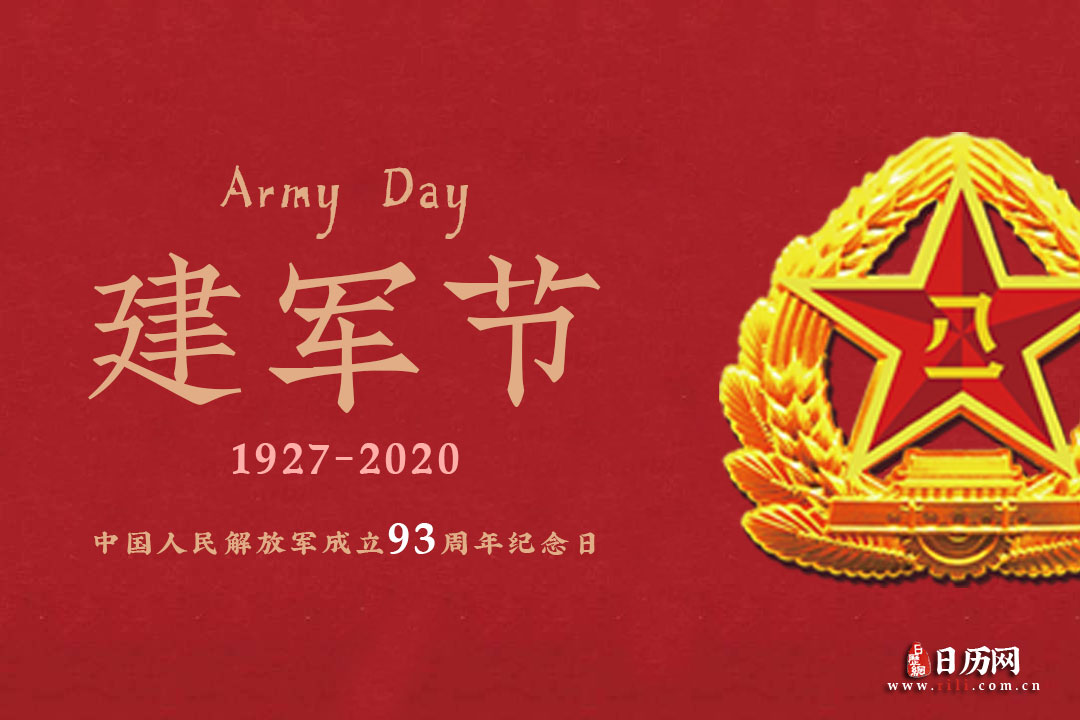
81 Day origins八一建军节来历
April 12, 1927 and July 15, Chiang Kai-shek, Wang Jingwei in Nanjing and Wuhan, to launch a "total clearance" operation, the CPC Central Committee held in Hankow interim meeting of the Politburo Standing Committee, decided to use hands and under the influence of the Communist Party of the National Revolutionary Armed Forces was held in Nanchang Uprising, and assigned as Zhou Enlai前敌Uprising Committee secretary of the leading organs。
1927年4月12日和7月15日,蒋介石、汪精卫先后在南京和武汉发动“清共”行动后,中共中央在汉口召开了临时政治局常委会议,决定利用共产党掌握和影响下的国民革命军在南昌举行起义,并指派周恩来为起义领导机关前敌委员会书记。
July 27, Zhou Enlai was held in Nanchang there Zhu De, Liu, Yun Daiying, Peng Pai, Ye Ting, Rongzhen and organizations responsible for Jiangxi Province to participate in important meetings were set up for the staff to the head of Liu Bocheng, Zhou Enlai, Ye Ting , He Long was a member of the Staff Committee, under the rebel army headquarters from Helong any commander-in-chief commander-in-chief前敌Ren Ye Ting。
7月27日,周恩来在南昌召开了有朱德、刘伯承、恽代英、彭湃、叶挺、聂荣臻以及江西党组织负责人参加的重要会议,成立了以刘伯承为参谋团长,周恩来、叶挺、贺龙为委员的参谋团,下设起义军总指挥部,由贺龙任总指挥,叶挺任前敌总指挥。
At 2 o'clock on August 1, Zhou Enlai, Zhu De, He Long, Ye Ting, Liu Bocheng all other command at the Nanchang Uprising of the military to attack the KMT forces, after more than four hours of fierce fighting, about 3,000 people annihilate , and seized about 5,000 firearms teams, made more than about 100 rounds of ammunition, artillery few doors, occupied the city of Nanchang。 Earlier in the day, was held in Nanchang, the KMT Central Committee, in particular provinces, autonomous regions, municipalities and overseas on behalf of the joint meeting of the party, adopted the "Declaration, member of the Central Committee", set up by the Soong Ching Ling, Zhou Enlai, He Long, Ye Ting, Zhu De and other 25 were composed of the Chinese Kuomintang Revolutionary Committee, adopted the "Declaration of 81 Uprising", etc。, put forward a "Down with imperialism," "Down with the old and the new warlords," "the implementation of land to the tiller" and other slogans and platforms o
of the revolution。 At the same time, the reorganization of the intifada forces, still used in the second front of the National Revolutionary Army designation, and in behalf of the commander-in-chief Helong。 Due to a large number of troops to attack the enemy in Nanchang, the CPC Central Committee before the Committee decided in accordance with the schedule, the uprising force in the August 3-6 Nanchang has evacuated, the troops on the south, by way of Linchuan, Yihuang, Guangchang, went straight to Guangdong Chaozhou-Shantou area 。
8月1日凌晨2时,周恩来、朱德、贺龙、叶挺、刘伯承等各指挥的各个起义军向驻守南昌的国民党军队发动进攻,经过四个多小时的激战,歼敌大概3000余人,缴获枪支大概5000余支,子弹大概100万余发,大炮数门,占领了南昌城。当天上午,在南昌举行了国民党中央委员、各省区特别市和海外各党部代表联席会议,通过了《中央委员宣言》,成立了由宋庆龄、周恩来、贺龙、叶挺、朱德等25人组成的中国国民党革命委员会,通过了《八一起义宣言》等文件,提出了“打倒帝国主义”、“打倒新旧军阀”、“实行耕者有其田”等革命口号和政纲。同时对起义部队进行了整编,仍沿用国民革命军第二方面军番号,以贺龙兼代总指挥。因敌以重兵进攻南昌,中共前委决定根据中共中央的预定计划,起义部队于8月3日至6日先后撤离南昌,挥师南下,取道临川、宜黄、广昌,直奔广东潮汕地区。
Uprising forces in Ruijin, Jiangxi, Huichang defeated the Kuomintang reactionary armed forces to intercept, and then after the Changting Fujian, and Guangdong Shanghang Oura, at the end of September occupied the Chaozhou, Shantou, Jieyang by main force to the west pit soup。 Early in October, the West into the forces and the forces behind Chaoshan siege by the enemy advantage, most of the intifada forces to break up, part of Lufeng out to the sea, with local farmers to join militants; the other part by Zhu De, Chen Yi, led by South Jiangxi, northern Guangdong, southern Hunan turn, carried out guerrilla warfare。 In January 1928 in southern Hunan and local party organizations with the cooperation of armed peasants, held in Yizhang "uprising the year。" Advantage of the enemy because of the "Association destroy" the uprising of peasants armed forces and the withdrawal of Southern Hunan, in the same year arrived in April Jinggangshan led forces and the victory of Mao Zedong met to form the Revolutionary Armed Forces of the Chinese workers and peasants Fourth Army, later renamed the Red Army the first worker-peasant Si-Jun。
起义部队在江西瑞金、会昌打垮了国民党反动军队的堵截,然后经过福建的长汀、上杭和广东的大浦,于9月下旬占领了潮州、汕头,主力部队经揭阳向汤坑西进。10月初,西进部队和留守潮汕的部队遭到优势敌军的围攻,起义部队大部分被打散,一部分突围到了海陆丰,与当地的农民武装会合;另一部分由朱德、陈毅率领经赣南、粤北转入湘南,开展游击战争。1928年1月在湘南地方党组织和农民武装的配合下,在宜章举行了“年关起义”。由于遭到优势敌军的“协剿”,起义部队和农民武装撤出湘南,于同年4月到达井冈山与毛泽东率领的部队胜利会师,组成中国工农革命军第四军,后改称工农红军第四军





